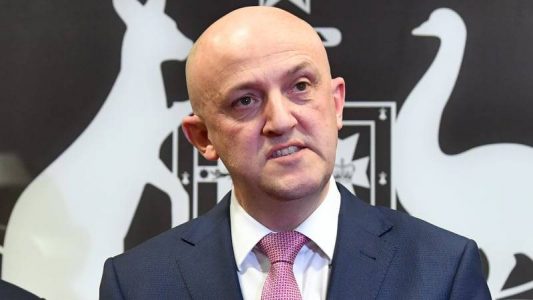
Australia anticipating terrorist attack in the next year from either right-wing or Islamic extremists
The head of the nation’s domestic intelligence agency has told a parliamentary inquiry that it is anticipating there will be a terrorist attack in Australia sometime in the next year.
The director-general of the Australian Security Intelligence Organisation (ASIO), Mike Burgess, said while the main security threat remained from Sunni Islamic extremist groups, the growth in right-wing extremism was also a major concern.
“Obviously, terrorism threat level remains probable,” he said.
“It can come from either ideology and therefore for me doesn’t really matter, because they’re both capable of conducting acts of violence and that’s where we focus.”
Mr Burgess was later asked to clarify his comments, that he believed an attack could happen within the next year.
“We have credible intelligence that individuals and small groups have the capable intent and we, on that basis, assess that there is likely to be a terrorist attack sometime in the next 12 months as we’ve seen in the last 12 months,” he said.
“Unfortunately there were two terrorist attacks in this country last year and it resulted in two Australians being killed.
“We anticipate that is likely in the next 12 months, that was probable means.”
Mr Burgess was speaking at an inquiry into extremist movements and radicalism in Australia that’s currently being run by the powerful Joint Committee on Intelligence and Security.
He said right-wing extremism had grown from 16 to 40 per cent of the agency’s onshore terror-related workload over the course of the last three years.
The Australian Federal Police’s Deputy Commissioner said he backed Mr Burgess’s comments about the growth in right-wing extremist groups.
“It’s the fastest-growing threat, but at this stage it’s not the predominant threat,” Ian McCartney said.
Mr Burgess told the committee a decision to avoid referring to “Islamic” and “right-wing” extremism came after months of discussions with the community and stakeholders.
ASIO will now use the umbrella terms of “religiously motivated violent extremism” and “ideologically motivated violent extremism” to describe those seeking to do harm.
“We didn’t think just assigning political spectrums was helpful,” he said.
“It’s not a ban on other terms and where we need to give colour to a particular form ideology we will call it out.”
When asked by Labor’s Kristina Keneally if there was evidence of extreme misogyny in the messages spread by right-wing groups, the director-general said it went “hand-in-hand” with their broader narratives.
“It is the white supremacy racist narrative that does resonate with some Australians, not all, but there are a number that it does and that is of concern,” Mr Burgess said.
But the ASIO boss went on to make the point that simply being white was not the only criteria for not being the target of the groups as “if you don’t believe in their beliefs you will get called out and they will attack you”.
“Senator Keneally has an example of that, in terms of she’s on the receiving end of all sorts of comments by people who don’t like what she believes in, and how she’s challenging them,” Mr Burgess said.
“Being white doesn’t make you right in their eyes.”
Both Mr Burgess and Mr McCartney spoke about how the Internet was providing avenues for groups to reach out and radicalise people, as well as exacerbate the hate-fuelled messages.
“The online environment I think is very much a force-multiplier for extremism,” Mr McCartney said.
“I have a colleague of mine who describes the internet as a ‘salad bar of hate’ in terms of what, even at a very young age, a person can access on the Internet.”
The Deputy Commissioner also said the greatest threat of violent extremism was from people that were “lone actors” who were on the “periphery” of extremist groups.
Source: ABC





